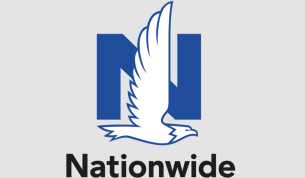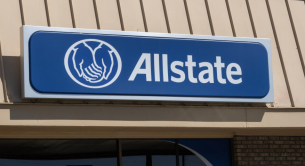Finding affordable car insurance online used to involve filling out numerous quote forms and sifting through fine print. Today, however, prepaid and pay-as-you-go insurance policies are rewriting the rulebook, offering drivers the freedom to choose coverage that fits their budget and lifestyle—often without the need for hefty deposits or long-term commitments.
As one insurance expert puts it, “The industry has never been more flexible. People want control over how they pay, not just how much they pay.”
A Shift Fueled by Economic Challenges
Rising premiums and increased living expenses have prompted many households to rethink how they manage their finances. Over the past two years, average auto insurance rates have surged by more than 25%, with states like California, Texas, and Florida seeing some of the most significant increases. In response, many consumers are opting for shorter, more flexible payment terms—sometimes paying by the mile—rather than locking into traditional six-month policies.
This trend mirrors broader changes across industries, from mobile phone plans to streaming subscriptions, as consumers demand smaller payments, more flexibility, and less risk of falling behind.
“The shift started quietly,” explained a representative who helps consumers compare digital-first policies. “When budgets tightened, people weren’t just looking for discounts—they wanted more breathing room.”
How Prepaid Car Insurance Works
Prepaid car insurance functions similarly to a prepaid phone plan. Drivers purchase a set amount of coverage and then top it up when the balance runs low. When the coverage runs out, the policy temporarily pauses until it’s refilled.
While it may not be ideal for everyone, prepaid insurance can be an excellent option for drivers in states like North Carolina or Pennsylvania, where public transportation can supplement daily driving. The main trade-off is slightly higher per-day rates, as insurers assume more short-term risk.
For many, however, the predictability of a prepaid system outweighs the cost. Knowing that coverage won’t automatically renew or surprise them with a large bill makes managing finances much easier.
Exploring Pay-As-You-Go Insurance
Pay-as-you-go insurance takes this idea a step further. Rather than prepaying for a block of time, drivers only pay for the miles they actually drive. A small telematics device or mobile app tracks mileage and driving habits, and billing is adjusted accordingly.
Major insurers like Progressive, Nationwide, and Allstate now offer this model. For instance, a driver in New York City who only uses their car on weekends may pay a fraction of what a commuter in Illinois would. In Michigan, where insurance rates have traditionally been high, usage-based insurance is offering more flexibility and potentially lower costs.
“The real appeal lies in the feedback loop,” the representative said. “You see how your driving directly affects your cost. It empowers drivers and encourages safer habits.”
The Growing Importance of Flexibility
For many Americans, missing a payment could lead to an immediate lapse in coverage, with the first bill often due before payday or following an unexpected expense. Prepaid and pay-as-you-go systems offer more flexibility, allowing drivers to stay insured even during financially tight weeks.
This timing flexibility can make a big difference. Georgia regulators have found that many short-term cancellations are linked to temporary financial struggles. By offering smaller, more manageable payments, insurers can reduce the risk of coverage lapses and help keep drivers legal on the road.
“As we’ve seen, keeping people insured through tough months builds long-term loyalty,” the representative noted.
Who Benefits Most from Flexible Coverage?
These models tend to be particularly well-suited for certain groups, such as younger drivers with fluctuating incomes, retirees who don’t drive often, and families with multiple vehicles.
For example, a parent in Ohio who shares a car with a college student can opt for affordable liability coverage without paying for full-time use. In states like Florida and Texas, where seasonal residents come and go, prepaid policies allow multiple vehicles to stay insured even when they’re parked for part of the year.
In busy urban areas like California or New York, pay-as-you-go policies appeal to those who drive infrequently but still need proof of coverage for legal or insurance purposes.
Convenience with a Cautionary Note
Buying insurance online has never been easier. Drivers can upload their ID, confirm their address, and receive proof of coverage almost instantly. Mobile apps provide balance alerts and renewal reminders, reducing paperwork and wait times.
However, with convenience comes responsibility. Since prepaid policies automatically pause when funds are depleted, failing to monitor balances could lead to a coverage gap, which may affect future rates. In states like Illinois and North Carolina, regulators require written notice before cancellation, but newer, digital-first insurers may operate under shorter notice windows. Setting phone reminders to track balances is recommended.
Navigating Privacy and Data Concerns
Pay-as-you-go models rely on telematics technology, raising privacy concerns for some drivers. Insurers track data like speed, braking patterns, and driving times, which is typically anonymized, though oversight can vary by state.
Experts recommend that consumers ask insurers how long their data is stored and whether it is shared with third parties. Some insurers also offer “mileage-only” tracking, which measures distance but avoids monitoring driving behavior. This option has become popular in states like Georgia and Michigan, where data transparency is a key concern.
Regional Growth and Innovation
Flexible insurance models have been adopted at different rates across the country. Southern and Midwestern states were early adopters, while Northeastern states like New York and Pennsylvania are catching up as more insurers become licensed for digital verification.
California remains a key testing ground, with its large population and complex rate regulations. Meanwhile, North Carolina’s steady rollout of prepaid options shows how regional insurers can compete with national brands by leveraging lower overhead and online platforms.
This trend is also gaining traction among newer startups, which are targeting underserved drivers. Prepaid policies provide a gateway to the insurance system for individuals with limited credit history or prior coverage gaps.
A Broader Financial Shift
The rise of flexible insurance reflects a broader shift toward flexibility in the consumer economy. Whether it’s health memberships, car-sharing apps, or digital services, the focus is on providing immediate access and manageable payments.
This shift has already had a positive impact, especially in Michigan, where data suggests a slight decrease in uninsured drivers as flexible insurance plans have gained popularity. The result is fewer uninsured accidents and lower overall system costs.
For insurers, it’s a balancing act between innovation and stability. For consumers, it’s a welcome shift in an industry that has traditionally favored predictability over personalization.
What to Consider Before You Sign Up
Before choosing a prepaid or pay-as-you-go policy, it’s crucial to carefully review the terms, including how soon payments are due after activation, whether balances can be automatically refilled, and how coverage lapses are handled.
Experts advise that prepaid insurance is a good option for those facing financial instability, but once a driver’s income stabilizes, traditional policies may offer more long-term savings. "Think of prepaid coverage as a stepping stone," said the representative. “When you're back on solid ground, traditional policies are often cheaper overall.”
The Bottom Line
Prepaid and pay-as-you-go insurance policies are part of a broader trend toward flexibility in financial services. While not suitable for everyone, they offer a solution for millions of drivers—whether navigating California's busy highways or Ohio's suburban streets—helping them stay insured and on the road.
Ultimately, the appeal of these models isn't just about price—it’s about offering drivers more control over their insurance, minimizing the risk of coverage gaps, and reducing stress in an industry that has long been dominated by rigid structures.
Disclaimer: This article is for informational and educational purposes only and should not be considered legal, financial, medical, or professional advice. Readers should consult with a qualified professional for advice tailored to their specific situation. We disclaim any liability for any loss or damage arising from the use or reliance on the information presented.





















